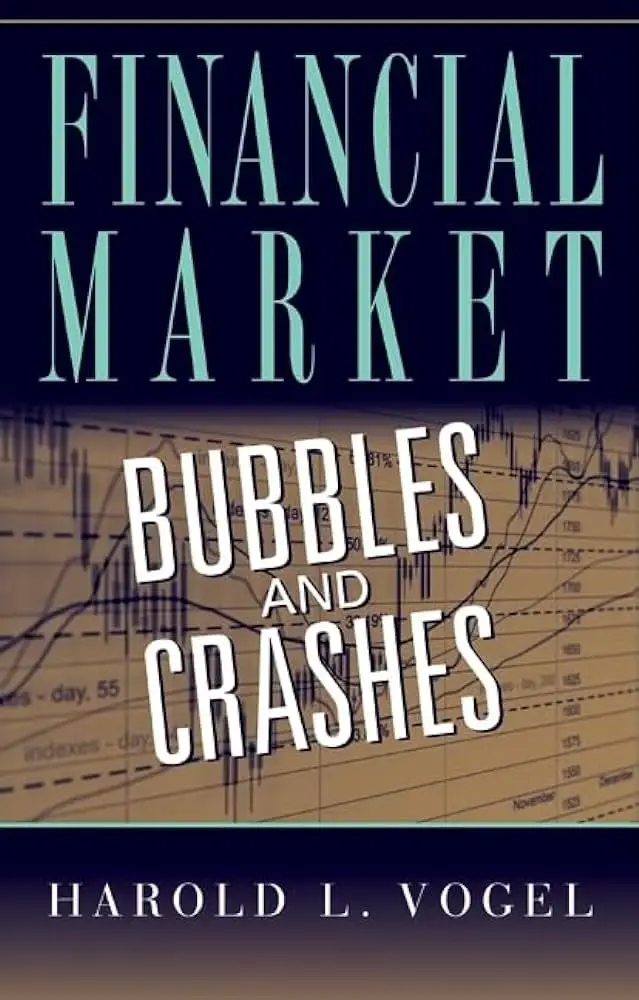Financial bubbles and crashes can be perplexing. Understanding the reasons behind these volatile economic events is crucial for anyone seeking to navigate the treacherous waters of the financial world. So, what exactly are financial bubbles and crashes? In simple terms, they are the result of market dynamics driven by irrational exuberance and fear. To truly grasp the intricacies of these phenomena, we must delve deeper into the psychology of investors, the influence of market forces, and the role of government regulation. By exploring these factors, we can gain valuable insights into the mechanisms that lie behind understanding financial bubbles and crashes. Let’s embark on this enlightening journey together.
Understanding Financial Bubbles and Crashes
Financial bubbles and crashes are phenomena that have occurred throughout history, impacting economies, businesses, and individuals. These events can have far-reaching consequences, leading to market volatility, financial instability, and in some cases, economic downturns. To navigate the complexities of the financial world, it is crucial to understand what causes these bubbles and crashes and how they can be identified and managed.
What is a Financial Bubble?
A financial bubble refers to a situation where the prices of assets, such as stocks, real estate, or commodities, become inflated beyond their intrinsic value. This rapid increase in prices is often driven by speculation, investor optimism, and a fear of missing out (FOMO). As the bubble continues to expand, more investors enter the market, driving prices even higher.
While bubbles can occur in various asset classes, they are commonly associated with stock markets. The most famous example is the dot-com bubble of the late 1990s, where technology stocks reached astronomical valuations before crashing in the early 2000s. Another notable example is the housing bubble in the mid-2000s, which led to the global financial crisis.
Causes of Financial Bubbles
Several factors contribute to the formation of financial bubbles. These include:
- Herd Mentality: Investors often follow the crowd, assuming that if others are investing, it must be a profitable opportunity. This collective behavior amplifies market euphoria and fuels the bubble.
- Easy Credit: When credit is readily available and interest rates are low, investors borrow more, increasing their purchasing power. This excess liquidity fuels asset price inflation.
- Over-optimism: During a bull market, positive sentiment and euphoria can cloud investors’ judgment, leading them to believe that prices will keep rising indefinitely.
- Speculation: Speculators enter the market solely to profit from rising prices, ignoring the fundamentals of the underlying asset. This speculative activity further inflates the bubble.
Identifying a Financial Bubble
Recognizing a financial bubble can be challenging, as it involves analyzing complex market dynamics and investor sentiment. However, there are several indicators that can help identify a potential bubble:
- Price-to-Earnings (P/E) Ratio: A high P/E ratio compared to historical averages may indicate that stocks are overvalued and susceptible to a correction.
- Increased Trading Volume: A surge in trading activity, accompanied by rising prices, may signify speculative buying rather than underlying value.
- Euphoria and Irrational Exuberance: When investors exhibit unbridled enthusiasm and disregard for traditional valuation metrics, it could be a warning sign of a bubble.
- Unsustainable Growth Rates: Extraordinary growth rates in asset prices that are disconnected from economic fundamentals can be indicative of a bubble.
The Anatomy of a Financial Crash
Financial crashes, also known as market crashes or market downturns, are the sudden and significant declines in asset prices, often resulting in panic selling and widespread losses. These events are preceded by the bursting of a financial bubble or triggered by unexpected external factors.
Causes of Financial Crashes
Financial crashes can be triggered by a variety of factors:
- Speculative Selling: When investors realize that the bubble has burst, panic selling can ensue as everyone rushes to exit the market, leading to a cascading decline in prices.
- Unexpected Events: External shocks such as political instability, natural disasters, or financial scandals can lead to a loss of investor confidence and trigger a market crash.
- Excessive Leverage: If investors have taken on substantial debt to invest in inflated assets, the unwinding of leverage during a downturn can exacerbate the severity of the crash.
- Regulatory Changes: Changes in regulations or government policies can impact market dynamics and lead to significant market corrections.
Managing Financial Crashes
While it is challenging to predict and prevent financial crashes, there are measures that can be taken to mitigate their impact:
- Diversification: Spreading investments across different asset classes and geographies can help reduce the risk of significant losses during a crash.
- Monitoring Risk: Regularly assessing and managing investment risk can provide early warning signs of potential market downturns.
- Setting Stop-loss Orders: Utilizing stop-loss orders, which automatically sell an asset if it reaches a predetermined price, can help limit losses during a crash.
- Staying Informed: Keeping up-to-date with market news and economic indicators can provide valuable insights for making informed investment decisions.
The Economic Impact of Financial Bubbles and Crashes
Financial bubbles and crashes can have significant implications for the overall economy:
Positive Effects
- Wealth Creation: During a bubble, asset prices rise, leading to increased wealth for investors and potentially boosting consumer spending.
- Economic Growth: Bubbles can stimulate economic activity and innovation as companies raise capital and invest in new ventures.
Negative Effects
- Market Volatility: Bubbles and crashes create instability in financial markets, resulting in erratic price movements that can erode investor confidence.
- Wealth Destruction: When a bubble bursts, investors who bought at inflated prices may suffer substantial losses, leading to a decline in their wealth.
- Financial Instability: Bubbles that burst can trigger a chain reaction of defaults, leading to credit crunches and banking crises, destabilizing the entire financial system.
- Economic Recession: Severe market crashes have the potential to spark economic recessions, causing a decline in productivity, job losses, and negative GDP growth.
The Role of Government and Regulatory Bodies
Government and regulatory bodies play a crucial role in monitoring and managing financial bubbles and crashes:
- Regulatory Oversight: Governments implement regulations and standards to ensure fair market practices and prevent excessive risk-taking.
- Central Bank Interventions: Central banks have the power to influence interest rates and monetary policy to stabilize financial markets during periods of volatility.
- Market Surveillance: Regulatory bodies closely monitor market activities, detect fraudulent practices, and investigate potential market manipulations.
- Financial Safety Nets: Government programs, such as deposit insurance and bailouts, are designed to protect investors and prevent systemic crises in times of financial distress.
By implementing effective regulations, conducting thorough market surveillance, and providing appropriate safety nets, governments can help prevent and mitigate the impact of future bubbles and crashes.
Understanding financial bubbles and crashes is essential for individuals, businesses, and policymakers to make informed financial decisions. By recognizing the warning signs, managing risk, and staying informed, market participants can navigate the unpredictable waters of the financial world more effectively.
How it Happened – The 2008 Financial Crisis: Crash Course Economics #12
Frequently Asked Questions
Frequently Asked Questions (FAQs)
What is a financial bubble?
A financial bubble refers to a situation in which the prices of certain assets, such as stocks or real estate, rise rapidly to unsustainable levels due to speculation and investor optimism. The inflated prices are often not supported by the underlying fundamentals of the assets.
How do financial bubbles form?
Financial bubbles typically form when there is excessive optimism and speculation in the market. Factors such as low interest rates, easy access to credit, and herd mentality among investors can contribute to the formation of a bubble. As prices rise, more investors are attracted to the market, further driving up the prices.
What are the warning signs of a financial bubble?
Some warning signs of a financial bubble include rapidly rising asset prices, high levels of borrowing and leverage, excessive trading volumes, and a disconnect between asset prices and economic fundamentals. Additionally, investor sentiment reaching extreme levels of optimism can be a red flag for a potential bubble.
What causes a financial bubble to burst?
A financial bubble can burst when there is a trigger event that leads to a sudden change in market sentiment. This trigger event could be an economic downturn, a negative news event, or a realization among investors that prices have become unsustainable. Once the bubble bursts, asset prices plummet as investors rush to sell their holdings.
What are the consequences of a financial bubble bursting?
When a financial bubble bursts, it can have severe consequences for the economy and investors. Asset prices can experience sharp declines, leading to significant financial losses for those who invested at the peak of the bubble. The bursting of a bubble can also result in a credit crunch, economic recession, and a decline in consumer and investor confidence.
How can investors protect themselves from financial bubbles?
To protect themselves from financial bubbles, investors should practice sound investment strategies such as diversification, thorough research, and careful analysis of the underlying fundamentals of the assets they are investing in. Additionally, maintaining a long-term perspective and avoiding speculative behavior can help mitigate the risk of bubble-related losses.
Are financial bubbles predictable?
While it is challenging to predict the exact timing and magnitude of financial bubbles, there are certain indicators and warning signs that can suggest the presence of a potential bubble. However, accurately timing the bursting of a bubble is extremely difficult, as it often relies on unforeseen trigger events and market sentiment.
What lessons can be learned from past financial bubbles and crashes?
Past financial bubbles and crashes have taught valuable lessons about the dangers of excessive speculation, herd mentality, and the importance of considering economic fundamentals in investment decisions. It is crucial for investors and policymakers to study and learn from historical financial bubbles to prevent the recurrence of such events and mitigate their negative impacts.
Final Thoughts
Understanding financial bubbles and crashes is crucial for investors and policymakers alike. By studying past instances, we can identify common patterns and behaviors that contribute to these phenomena. It is evident that excessive speculation and irrational exuberance often drive the formation of bubbles, while abrupt changes in market sentiment or external shocks can trigger crashes. Moreover, the influence of mass psychology and herd mentality cannot be underestimated. Recognizing these factors and placing emphasis on risk management and regulation can help mitigate the impact of future market disruptions. To navigate the complex world of finance, a comprehensive understanding of financial bubbles and crashes is essential.



